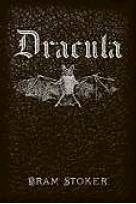ANOTHER VIEW
How Count Dracula visits Mi Tierra
By Rafael Castillo FOR THE EXPRESS-NEWS
Gothic aficionados will be happy to learn that Bram Stoker’s iconic 1897 “Dracula” is part of the public domain.
With the copyright long expired, the supernatural tale of the bloodsucking vampire can be repackaged, downloaded free, rewritten from the storyline of Mina Murray or Van Helsing — even expanded with a chapter making the old count a distant cousin of Count Norbert Von Ormay, whose last name was misspelled by a general postmaster and since known as “Von Ormy.”
Imagine writing something about Count Dracula teaming up with his fictional cousin and making his way to San Antonio in 1886, arriving with his countess and servants — even registering his cattle brand at the Bexar County Courthouse.
After Count Ormy’s disappearance, the International-Great North Railroad built a rail line on the western edge of the Francisco A. Ruiz Ranch in 1886 and renamed the town Medina Station. By 1900, the railroad used the name “Von Ormy” again. Over the next few decades, the population of Garza’s Crossing shifted closer to the rail line. Of course, adding Count Dracula into the fray is all fictional.
“Dracula” is written in an epistolary style, consisting of diary entries and letters penned by Jonathan Harker. The story’s main character gives dates detailing the narrative’s temporal progression, with chapters including Mina Murray, Dr. John Seward, Lucy Westenra and Dr. Van Helsing. Any person with a modicum of wit could transform it into a blog, even an online interactive novel and a crowd-sourced creation.
Free literary experimentation is possible because of copyright law and the concept of public domain. The lynchpin is the encouragement of creativity by granting creators exclusivity to their work for a limited term. The protections granted to content creators are intended to incentivize the production of original works. Yet the duration is short-term so that aging content can be recomposed and expanded to new mediums — and formatted to a broader audience, like Jane Austen and Wayne Josephson’s “Emma and the Vampires” with a snarky wink to Seth Grahame-Smith’s “Pride and Prejudice and the Zombies.”
Any deviation from “Dracula” demonstrates the role the public domain plays in boosting creativity and ensuring that classics live forever.
In its earliest form, U.S. copyright law granted protection for 14 years to authors who registered their creative works. The nature of copyright has transformed significantly over the years as a result of key legislative changes and efforts such as the Berne Convention. In the United States and the United Kingdom, content creators no longer need to register their works, and the term lasts for their lifetime, plus 70 years.
Unfortunately, Stoker did not register for copyright on “Dracula” in the United States. In the United Kingdom, the work was protected for 50 years beyond Stoker’s death in 1912 as dictated by law at the time — meaning the book fully entered the public domain in 1962. As a result, the full text of “Dracula” is widely available on the internet, where it can be appreciated by scholars and new audiences at no cost. Stoker’s infamous count, now a ubiquitous cultural icon, can be shared by all.
Stoker fans in San Antonio are pecking at their keyboards right now, imagining the ageless Count Dracula haunting La Villita, even eyeing the red enchiladas at Mi Tierra while sipping a bloody mary.
Rafael Castillo teaches writing and humanities at Palo Alto College, and is the author of “Distant Journeys” and “Aurora.”

